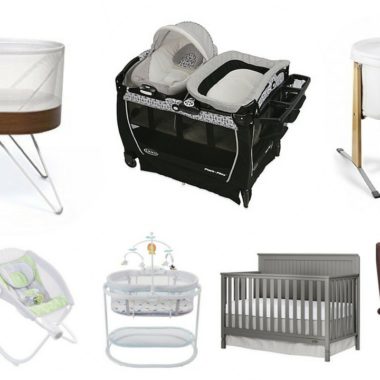The summer brings sunshine, longer daylight hours, and all new activities, but this excitement and all the changes can certainly be damaging to the sleep of infants and toddlers. Maintaining a regular napping and sleep schedule can lead to better days, better sleep at night, and a happier child. There is also a need for grace and flexibility for both parent and child, as naptime implementation may get challenging, and you are both doing your best.
Head Outside
We have all heard the suggestion to take children outside every day from the time they are little as fresh air and the vitamin D from the sun are necessary for health, but also that fresh outside air will make them tired. While it is true that fresh air and exercise will help to tire out a toddler, the sun also helps the body to produce melatonin, which is necessary for sleep. Melatonin is the hormone that tells the body and the brain that it is time to slow down and rest.
When it is hot outside, it is important to still have time outside but to do so carefully with proper clothing and protection from sun damage. Wearing light coloured thin clothing, a hat, and sunscreen are important to protect their skin and to keep them from overheating.
Create the Ideal Sleep Environment
While the sun signals to the body that it is time to be awake, darkening the room can help to slow the thoughts and prepare the body for sleep. Using darkened blinds or curtain, or black out curtains as necessary, allows the room to be cozy and welcoming.
By creating an association with the bed and the bedroom, with sleep being in the bed helps to shift from playtime to rest and can help both children and adults to fall asleep faster and stay asleep longer. The bed should be comfortable with appropriate bedding and protections based upon the age of the infant or toddler. Infants should not have pillows or loose bedding, but toddlers can have a small pillow and a blanket if it helps them to sleep.
Look for Sleep Cues
Every child offers cues to when they are becoming tired, and these can be hard to notice at first. These sleep cues alert you to the time when they are tired enough to sleep, but not over tired. Once a child becomes overtired, they are much harder to get to sleep, and may end up settling for bed late.
Some examples of sleep cues are tugging at their earlobe, rubbing eyes, seeking out their favorite stuffed toy or blanket, or even bringing you a book to read. These can be quite subtle, making them much harder to pick out, but remain consistent as they grow so once you have determined what their sleep cue is, you will begin to notice it more easily.
Once you notice your child is showing their sleep cue it is time to get them settled into bed. Use your own sleep cues for them to help ease them into sleep, such as reading a story, singing a song, or giving them a gentle massage. Maintaining a similar routine for putting them down for a nap in the afternoon as you use at night for bedtime can also help them to fall asleep faster.
Be Consistent but Flexible
Children thrive on routine and consistency and this is true more in consideration to sleep as it is for anything else. Consistency should be maintained in regard to the routine used to prepare for sleep, the times that they are napping, and the length of their naps. During the summer, when the sun is out longer and brighter, and schedules have all changed, it is also important to offer grace and patience to yourself and your child where the schedules are considered. Being late for nap sometimes is not terrible, and a few missed naps will not be overly damaging or troublesome in the long run. Nap time can be tricky at the best of times, but when there are so many other activities to be doing it can become even harder.
Children who are ready for a nap, but not at home-can easily nap elsewhere. A cool, darker room with sleepy time indicators from home such as a song, a gentle massage or a light blanket will help to remind them that it is nap time.
As parents becomes more stressed about a nap or a missed nap, the more stressed the baby or toddler will become. Therefore, it is important to remain relaxed and offer both yourself and your child kindness when a nap is just not working. They may take longer to fall asleep, or they may not sleep at all, or they may sleep longer than other times. Either can affect bedtime and even the mood for the afternoon but are a normal part of growing up and parenting. Flexibility in the timing and placement of naps in the summer can be the key to a happy summer. If naptime doesn’t work out one day, you may try again another day. The more consistent you are, the more your results may flourish.
Summertime naps can be the hardest of the whole year. The higher temperatures can make it harder to sleep, spending time outside can adjust the sleep schedule and either cause infants to sleep more or less, and toddlers to often become too excited to sleep! By getting some time outside every day, keeping consistent when possible but flexible when necessary, and watching for the sleep cues that let you know when it’s nap time you can have a great summer regardless of nap schedules.
For more tips/tricks on getting your child to sleep, my FREE Masterclass: Gentle Solutions to Get Your Infant/Toddler to Sleep Through The Night can be found here .
- Shocking Truths About Postpartum Sex - October 11, 2021
- Tips for Getting Your Infant/Toddler to Nap During the Summer - July 27, 2021
- Going Into Labor Soon? Birth Phases You Can Expect - September 28, 2020








